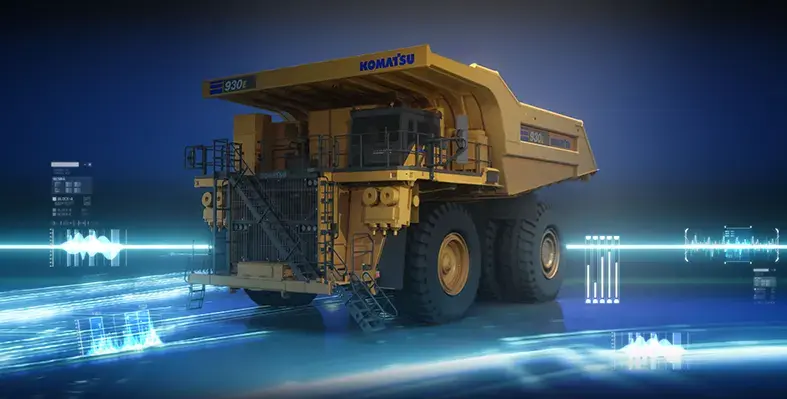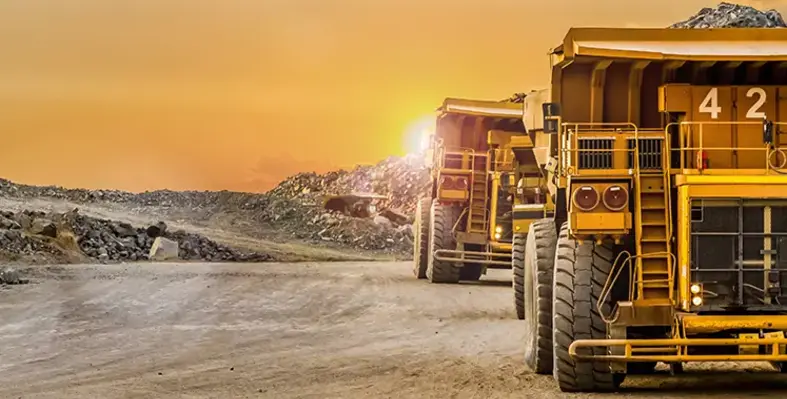
Collaboration to deliver step-change capabilities through software-defined vehicle and autonomy platform. (Image source: Komatsu)
Komatsu has announced a strategic technology collaboration with Applied Intuition, a Silicon Valley-based leader in vehicle intelligence, to accelerate the development of its next-generation mining equipment
The partnership is focused on equipping Komatsu’s machinery with advanced technologies and real-time adaptability, enabling customers to achieve higher productivity, minimise downtime, and operate with greater precision.
By combining Applied Intuition’s expertise in vehicle operating systems, autonomy stacks, and AI-powered tools with Komatsu’s extensive background in off-highway autonomy and mining applications, the two companies will jointly create a unified software-defined vehicle (SDV) and autonomy platform. This platform will serve as the central intelligence of Komatsu’s future mining machines. Considered one of Komatsu’s most significant technology undertakings, the initiative signals a decisive move toward increasingly autonomous, software-driven mining operations.
“Komatsu is committed to creating value together with our customers, and this collaboration represents a step change in how we bring innovative, high-performance technology to their operations,” said Peter Salditt, president, mining business division, Komatsu and CEO, Komatsu Mining Technologies. “By combining Komatsu’s deep mining expertise with Applied Intuition’s cutting-edge AI and SDV solutions, we’re enabling a future where our equipment continuously evolves to meet customers’ unique mine site needs.”
The platform will deliver advanced machine intelligence through several core features:
-
A software-defined vehicle architecture that supports continuous feature delivery over the machine’s lifecycle, with built-in data management, cybersecurity, and connected support.
-
Scalable autonomy capabilities ranging from operator-assist functions to full autonomy on a single adaptable platform, suitable for diverse fleets, commodities, and operational conditions.
-
Embedded AI and machine learning to enhance functionality and enable continuous adaptation to site-specific requirements as environments change.
With these innovations, mining companies are expected to see improved equipment performance, lower downtime, and higher return on investment. The architecture also aims to accelerate deployment, simplify support, and provide scalability across mines of varying sizes and locations—an important advantage for an industry navigating labor shortages, difficult environments, and growing global demand.
“In a world where autonomy is becoming the norm, our goal is to ensure our customers don’t just keep up—they lead,” said Qasar Younis, co-founder and CEO of Applied Intuition. “The mining industry is one of the most regulated in the world, and as the bar keeps rising around emissions, human safety and geopolitics, Applied Intuition and Komatsu plan to build the next generation of mining products and redefine modern software product development. The team is looking forward to breaking new ground and digging into the future.”
This collaboration strengthens Komatsu’s long-term vision of fully autonomous mining operations while also addressing urgent industry challenges. As demand for minerals accelerates and fewer skilled workers enter the sector, autonomy becomes increasingly vital for safe, efficient, and scalable mining.
Together, Komatsu and Applied Intuition are setting the stage for mining machines that can think, learn, and evolve—helping operators worldwide enhance efficiency, unlock more value, and build a more sustainable mining future.









